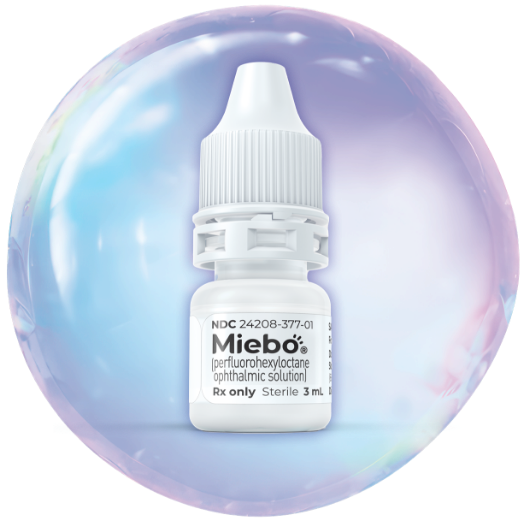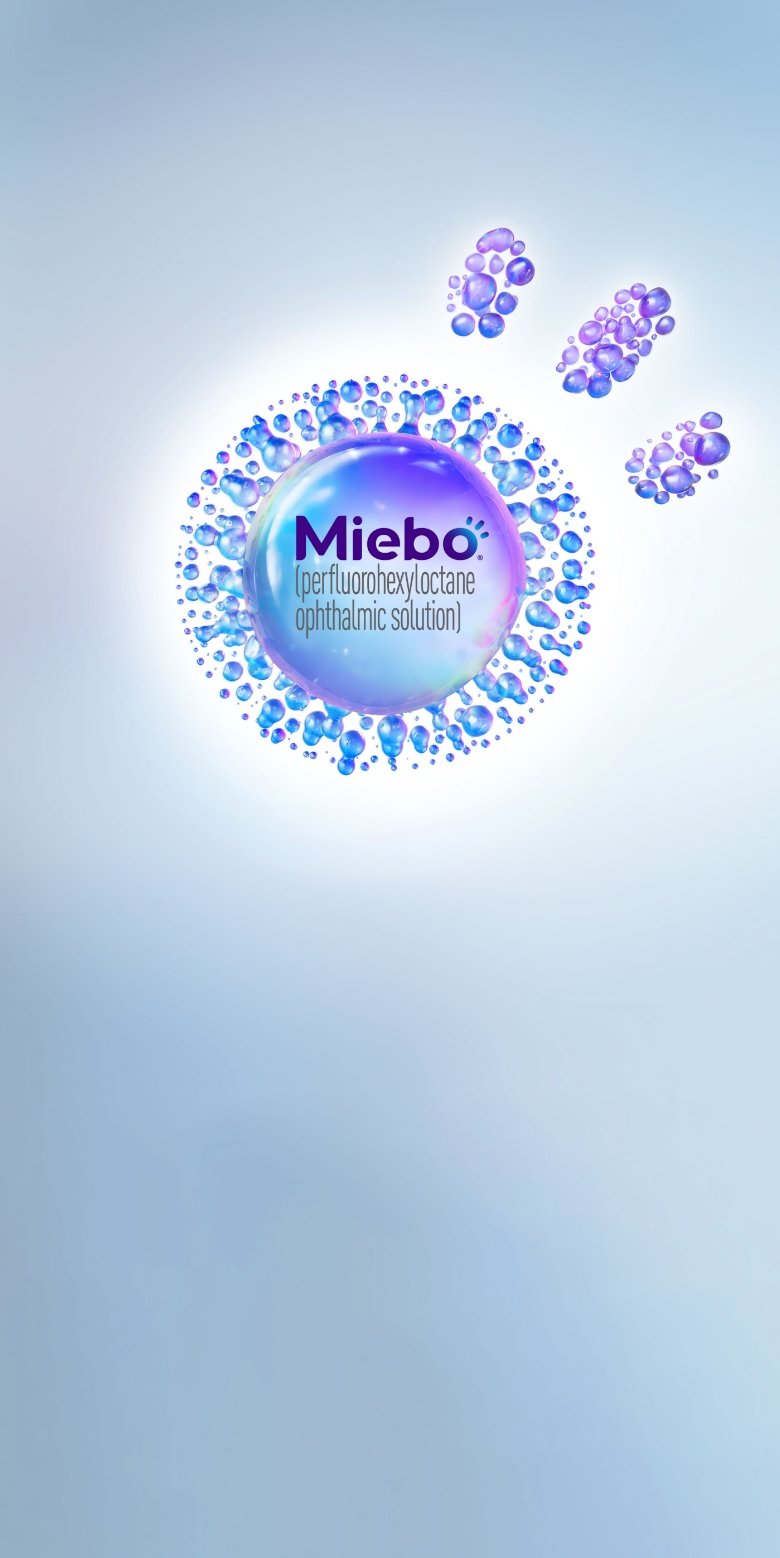†The exact mechanism of action for MIEBO in DED is not known.1
‡Study design: Two 57-day, multicenter, double-masked, saline-controlled studies (GOBI and MOJAVE) were conducted in adults ≥18 years old with a self-reported history of DED in both eyes. Primary outcomes were change from baseline in total corneal fluorescein staining and change from baseline in eye dryness score at Day 57. Day 15 was the earliest time point at which signs and symptoms were evaluated in the trials. Day 57 (primary endpoints) was the last.1,5,6
§Data were pooled from >1200 total patients from 2 pivotal clinical studies (GOBI and MOJAVE). Of the 614 patients who received MIEBO, there were no incidences of serious ocular AEs with MIEBO. Most AEs were considered mild. The discontinuation rate due to AEs for MIEBO was comparable to control (pooled: 0.2% vs 0.5%; GOBI: 0.3% vs 1.0%; MOJAVE: 0% vs 0%). 0.5% (pooled) of patients experienced instillation site pain AEs, such as burning or stinging (GOBI: 1.0%; MOJAVE: 0%). Blurred vision (pooled: 2.1%; GOBI: 3.0%; MOJAVE: 1.3%) and conjunctival redness (pooled: 0.8%; GOBI: 0%; MOJAVE: 1.3%) were reported in 1%-3% of individuals.1,5-7














